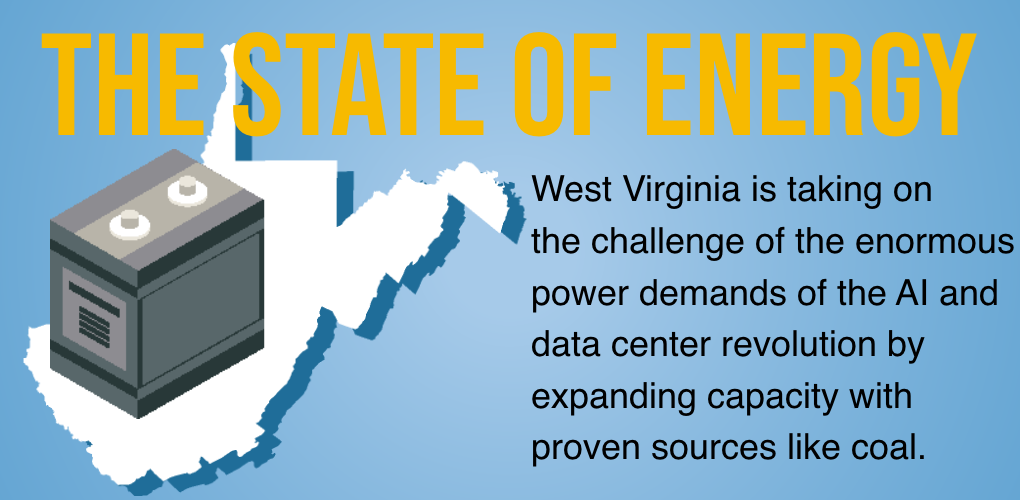
Can West Virginia Come to the Rescue?
“We must become the indispensable battery of the nation,” West Virginia Governor Patrick Morrisey said last week when he announced a plan to expand the state’s generating capacity to 50 gigawatts (GW) by 2050 from roughly 15 GW today.
Morrisey’s plan, called “50 by 50,” envisions not just an effort to maintain West Virginia’s existing coal capacity but expand it along with efforts to expand gas generation and eventually add nuclear power.
Morrisey sees an urgent need for more dispatchable generation to feed the enormous power demand of the AI and data center revolution. West Virginia is uniquely positioned in the PJM Interconnection region to be a net energy exporter, he said, making the state’s coal and gas supplies a national security asset in the “AI and technology arms race.”
Just across the border, Virginia – the nation’s data center capital – has already become the nation’s largest electricity importer and desperately needs more power. The entire PJM market – the nation’s largest with 67 million customers – is rapidly approaching projected power supply shortfalls.
After jumping 800% a year prior, capacity prices across PJM hit a newly installed price cap this summer—a clear signal to bring new capacity to market and to not retire any existing capacity.
PJM’s newly updated demand forecast sees 32 GW of new demand by 2030, with 30 of it coming from data centers. PJM expects its summer peak demand to increase by 55 GW in just the next decade.
“Data center load has the potential to overwhelm the grid, and I think it is on its way to doing that,” said Joe Bowring, who heads PJM’s independent market watchdog.
Grappling with Reality
Governor Morrisey’s plan is ambitious. It’s also necessary. Every governor in the PJM footprint should be grappling with the nation’s new energy reality where surging demand is colliding with eroding grid reliability. Immense economic opportunity and consumer affordability hang in the balance.
Keeping West Virginia’s existing coal fleet up and running – and eventually boosting the performance of those plants – is the foundation of Morrisey’s plan. It’s a recognition of trends already emerging in the marketplace.
With power demand now growing rapidly and natural gas prices facing upward pressure, coal generation is up across the country this year. Morrisey is betting meeting new data center power demand isn’t just going to take every megawatt of existing coal capacity but additions as well.
Power availability is the key factor to determining where the AI revolution happens. And in this global competition, China has a clear advantage.
“China is spitting out coal-fired power plants really rapidly,” Morrisey said. “America is either going to find a way to dramatically increase its power production … or China will eclipse our nation in a technological battle that will destroy our national security.”
Of course, he’s right. China is adding renewable capacity at a remarkable pace, but its dramatic expansion of the world’s largest coal fleet is no less remarkable.
China commissioned 21 GW of coal power in the first half of the year with projections for the full year exceeding 80 GW. According to China’s Bureau of Statistics, China produced more power from coal in August than ever before. Coal is the foundation of China’s industrial and economic might and that shows no signs of changing. China now uses nearly 40% more coal than the rest of the world combined.
“We can’t turn our back on our existing coal-fired power plants,” Morrisey said, “and we’re going to work with the federal government to pursue new coal-fired generation.”
“I think there is room for all forms of energy, and we need to grow the pie significantly if we’re going to get to 50 gigawatts of energy by 2050,” he said. “But we have to rely on where we’re strong and build on those strengths.”
- On September 17, 2025
